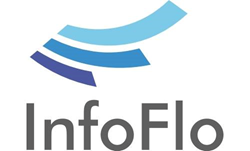 If you use the Internet for most of your work day and have yet to adopt task and project management tools into your workflow, or if you’re a business owner and haven’t set up your employees on a task management system, it’s time to seriously consider doing so. In a study done by University of Hamburg researchers it was confirmed that the focus afforded to our flighty minds drops from minutes to seconds when afforded with the opportunity to surf on the internet. According to statistics verified by The Associated Press, our ability to pay attention while online has dropped to less than 8 seconds in recent year.
If you use the Internet for most of your work day and have yet to adopt task and project management tools into your workflow, or if you’re a business owner and haven’t set up your employees on a task management system, it’s time to seriously consider doing so. In a study done by University of Hamburg researchers it was confirmed that the focus afforded to our flighty minds drops from minutes to seconds when afforded with the opportunity to surf on the internet. According to statistics verified by The Associated Press, our ability to pay attention while online has dropped to less than 8 seconds in recent year.
The first step to making productive use of your time is to find out how you and your employees are presently spending it. Keeping a time log is one effective way to do this. After trying it out for one week, you’ll immediately gain insight into where your time is actually going. The act of measuring is often good enough to lift you and your staff’s unconscious habits into your conscious, where you then have a chance to dissect and examine and then change them.
Here’s how to keep a time log. Throughout the workday keep a record of the time whenever you start or stop a task. Consider using a stopwatch to keep track of the intervals. At the end of the day, sort all the time chunks into categories, and find out what percentage of your time is being spent on each task. If you want to be thorough, do this for a week, and calculate the percentage of your total time that you spent on each type of activity per week. Be as detailed as possible. Note how much time you spend emailing customers and prospects, reading industry-related news, making follow-up phone calls, eating, putting out fires, etc. If you get up out of your chair, it probably means you need to make note of that in your log.
You may not be surprised to know that you’re spending only a small fraction of your working time doing what you define as “work”. Studies have shown that the average employee does only 1.5 hours of “work” per day. The rest of the time is spent talking to co-workers about non-work related things, taking coffee breaks, eating, shuffling papers, and sometimes even texting on the phone. The average full-time office worker doesn’t even start doing real work until 10:30 am and begins to shut down and get ready to go home at around 4:00 pm.
InfoFlo CRM Software allows you to attain and maintain optimal productivity levels with its Task Management feature. It allows you to create time-sensitive tasks and organize them into lists. As well, it enables you to create sub-tasks, add notes or files, and delegate tasks to other members of your team with ease. Download your free trial today.





